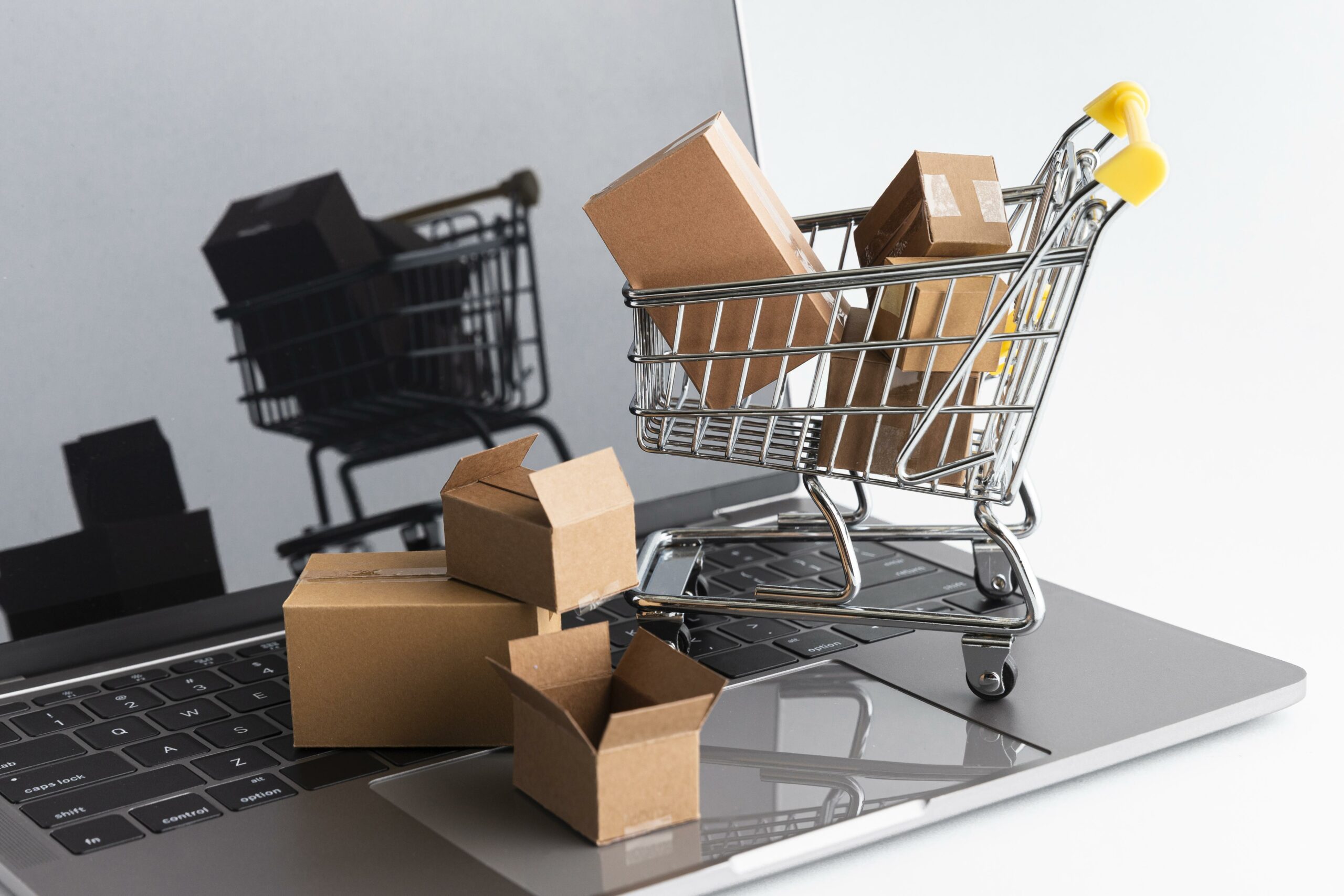
What’s the difference between Amazon FBA vs FBM? This is one of those Amazon seller questions you should probably ask before you start selling. In this financial guide, we will help you understand these two main selling models on the Amazon platform. We will cover benefits, financial implications, profitability, cost, and other considerations. By the end, you’ll have better insight as to which model to use for your business.
Understanding Amazon FBA
What is Amazon FBA?
Fulfillment by Amazon is part of a set of automated services offered to those who want to sell on their platform. Instead of sellers packing orders and shipping it to customers themselves, Amazon takes over. They take care of the whole order fulfillment process, including post-purchase customer service. With FBA, sellers can store their products in one of many global Amazon warehouses or “fulfillment centers”. This popular selling method is one reason the marketplace has seen such massive success.
Key benefits of using FBA
Prime Benefits
Selling via FBA is one of three ways to earn an Amazon Prime badge. As a seller, this badge allows you to offer exclusive shipping deals (same-day delivery, two-day delivery, etc.) to Prime subscribers.
Customer Service
Amazon handles customer service. This ensures sellers stay compliant with Amazon stringent policy regarding messages, returns, refunds, etc.
Accessibility
Their fulfillment allows even startup sellers to get a head start and not have to worry about arranging their own storage, couriers, shipping, and packaging.
International Market Potential
Fulfillment by Amazon is not just for local orders. It also allows you to dip into the global market with their FBA international programs.
Financial implications of FBA
As mentioned earlier, though the service has a lot of benefits, they come with a cost. As an FBA merchant, the cost of selling on Amazon goes beyond the referral and selling plan fees. For instance, in exchange for using their fulfillment centers, Amazon asks FBA sellers to pay storage costs. Also, you may also need to pay long-term storage fees in certain situations like if you don’t sell enough merchandise. We will break these costs of selling on Amazon a little more later on in this post.
Understanding Amazon FBM

What is Amazon FBM?
On the other side of the marketplace, you have FBM (Fulfilled by Merchant) sellers. As you may have guessed, this method means that sellers must take care of the fulfillment process themselves. This means that when a customer places an order, they are responsible for picking and packing. They must also arrange shipping and delivery. Customer service including the handling of returns/refunds, is also the seller’s responsibility. Sellers are also in charge of storing their inventory.
Advantages of FBM
For Amazon FBA vs FBM benefits, how do they stack up?
Control Over Inventory and Shipping
The biggest advantage of FBM is control. While it’s nice that you can be hands off with FBA, this can get pricey. For example, you can have your own arrangement for how long you can store inventory.
Potential for lower costs
There are potentially more cost-effective solutions out there for storage. You might even use a spare bedroom or a place where long-term storage won’t come with a bill.
FBM is also good if you want to support smaller local courier businesses.
Financial considerations for FBM
If you decide to do your own order fulfillment, you need to consider certain costs. These include:
- Packaging costs
- Shipping costs and delivery
- Returns management costs
- Customer service costs (tools and software to help with automation)
- Other logistics fees (gas, transport fees, etc.)
Comparative Analysis: Costs and Profitability
Breakdown of Amazon FBA vs FBM costs
Shared Costs
Regardless of the selling model, sellers must pay subscription fees, referral fees, and refund fees.
- Monthly subscription fees are either a per item fee of $0.99 (Individual plan) or $39.99 (Professional Plan) with no item limit.
- Referral fees are basically a percentage cut Amazon takes per item sale. The percentage depends on the product category and can range from 8%-45%.
- Refund fees are what Amazon charges to process a refund. This can be $5.00 or 20% of the charge. They apply the lesser amount.
FBA Fees
These are specific fees that FBA sellers pay:
- Fulfillment fees are fees Amazon charges depending on the size and weight of your products. You can check the Amazon fees page for a detailed table of these fees.
- FBA storage costs are based on product size and which time of year you store them. Prices in the season of October-December are higher. They charge per cubic foot of space and prices range from $0.56-$2.40.
- The FBA aged inventory surcharge (long-term storage fee) is the price you pay for any inventory leftover after 181 days. This is $0.50/ft³ and can go as high as $6.90/ft³ if you store them for a year or longer.
FBM Fees
There really aren’t any specific fees FBM sellers have to pay aside from the general three listed earlier. On top of the financial considerations listed earlier, FBM sellers should also consider other potential hidden costs. For instance, PPC advertising on the platform requires you to bid for keywords. You should also consider international shipping costs and customs fees.
Profitability comparison: How each model affects your bottom line
One of the main reasons we’re comparing Amazon FBA vs FBM is to help you find the more profitable model for you. You can certainly take your estimate of FBM-related fees and weigh them against the aggregate FBA fees. However, measuring profitability is more than factoring in the costs related to selling. Think about it also in terms of opportunity cost. FBA allows you to focus your time on building your brand, improving your advertising strategy, and finding new products to sell.
On the other hand, FBM allows you to stay in control and potentially improve your margins by cutting costs and selecting the right shipping and courier companies. Whether you’re on Amazon or selling on eBay or Shopify, you shouldn’t let the fees scare you away. We get it. They can certainly be daunting. But always consider the potential return on your investment and how you can use tools and services to your full advantage.
Operational Considerations

Inventory management challenges and solutions in FBA and FBM
Amazon not only charges FBA sellers for long-term storage, they also don’t like it if your inventory levels are low. Effective April 2024, Amazon will also implement an FBA low-inventory fee. This will apply to sellers whose stock levels have not historically met customer demand. Stockout is a concern for both types of sellers. This is true even if you are an FBM seller partnered with a third party warehousing company. Amazon can penalize you for low inventory levels if it becomes a recurring thing. You can also lose out on Buy Box eligibility. You can mitigate this by monitoring inventory levels and tracking product sales. An inventory management software can help you with these and automate restock alerts and reordering.
Impact on customer service and satisfaction
On a platform like Amazon, customer service is at the forefront. They care so much about customer satisfaction and experience that they have stringent guidelines in place when communicating with buyers. Even saying “thank you” might get you in trouble. The great thing about FBA is that Amazon takes careof the communication with buyers. They will be able to adhere to their CS guidelines more closely than the average seller. On the other hand, FBM allows you to be more personalized with your CS. You can lose that more personal touch with buyers if all they receive are automated Amazon messages.
Scalability of FBA vs FBM: Which model grows with your business?
Some of the largest companies with thousands upon millions of items reportedly use Amazon FBA like Procter & Gamble. This is because Amazon has a network of warehouses that can accommodate large quantities of products. If you want to expand your product lineup, you can be sure Amazon has the space for you. FBM sellers not only have to consider warehousing, but also how to manage everything else besides fulfillment. One solution for FBM sellers is to hire people to help with the load. It can help free up time, but it is an additional expense.
Strategic Decision Making
Factors to consider when choosing between FBA and FBM
First, think about the size of your business and investment. What budget do you have to purchase your initial merchandise and how many kinds? Second, consider the types of products you are going to sell and in what product categories. FBA is great for those selling smaller products, but if you want to sell bulkier items, FBM might be the better choice. Third, consider your business goals. What do you value? Does FBA fit into your long and short-term goals? Is Amazon more of a side hustle? Do you value their automation or do you want more control?
Transitioning between models
It is possible to switch between models if you want to. Some do it because they find a cheaper shipping option or because they want to add branding to their packaging. You can do this through your inventory tab in your Seller Account. After selecting “Manage Inventory”, you can find which SKUs to convert. Find the arrow next to the edit button for that SKU and select your fulfillment option.
Tools and resources for managing FBA and FBM operations effectively
The most important areas you’d want to use tools are keyword research and tracking, inventory management, analytics, and customer service automation. Some of these tools include Jungle Scout, SellerApp, and Helium10.
What Is EcomBalance?

EcomBalance is a monthly bookkeeping service specialized for eCommerce companies selling on Amazon, Shopify, Ebay, Etsy, WooCommerce, & other eCommerce channels.
We take monthly bookkeeping off your plate and deliver you your financial statements by the 15th or 20th of each month.
You’ll have your Profit and Loss Statement, Balance Sheet, and Cash Flow Statement ready for analysis each month so you and your business partners can make better business decisions.
Interested in learning more? Schedule a call with our CEO, Nathan Hirsch.
And here’s some free resources:
- Monthly Finance Meeting Agenda
- 9 Steps to Master Your Ecommerce Bookkeeping Checklist
- The Ultimate Guide on Finding an Ecommerce Virtual Bookkeeping Service
- What Is a Profit and Loss Statement?
- How to Read & Interpret a Cash Flow Statement
- How to Read a Balance Sheet & Truly Understand It
Conclusion
It’s clear that there are distinct differences between the two seller models. Each has its own advantages and potential drawbacks. As a seller, it’s important to know these things and how to use either or both to your advantage. Really, in the squaring up between Amazon FBA vs FBM, the only winner should be you.








